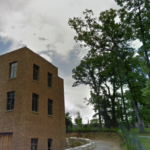What is Yield Protection/Tufts Syndrome?
What’s Covered:
- Understanding Yield
- Understanding Yield Protection
- Demonstrate Interest and Avoid Being a Victim of Yield Protection
- What Are Your Chances of Acceptance?
In the college application process, the relationship between a student and an institution is reciprocal. Applicants work to make themselves stand out to colleges, and colleges strive to make themselves attractive to prospective students. In today’s competitive application environment, where students apply to numerous schools, one of the characteristics many colleges are looking for in applicants is a willingness to attend—that is, if a student is accepted, will they actually enroll? Colleges measure this using the yield, also called acceptance rates.
Understanding Yield
To understand yield protection, you first must understand what yield is. The yield is simply the percentage of students who enroll at a university after being accepted. Many colleges hold the belief that their yield is indicative of prestige. An esteemed school like Harvard University had a yield of 83% for its Class of 2028, while just down the road Tufts’ 2028 class had a yield rate of 50%.
In general, it’s typical for highly selective schools—like Harvard—to have higher yields than less selective schools, in large part because they’re commonly a student’s first choice.
Understanding Yield Protection
Yield protection is a tactic reportedly used by some colleges and universities in which they reject or waitlist exceptional candidates, in part because they believe the students will be accepted and matriculate in more distinguished institutions. Because many institutions believe yield is an indicator of the desirability of a school, they work to maximize their yield; no school wants to be seen as a “safety” school. Yield protection is also commonly called “Tufts syndrome,” a moniker bestowed due to the large number of times Tufts University has been accused of the practice.
One of the greatest debates over yield protection is over its existence—no school openly admits to the practice. Some colleges and universities argue that Tufts syndrome is a fabrication made up by students bitter over being waitlisted or rejected by a school they thought they would be accepted to. One trait that suggests whether colleges practice yield protection is how they value demonstrated interest. Schools that greatly value demonstrated interest deliver a solution to overcome any potential Tufts Syndrome; simply show genuine enthusiasm for the school.
Real or not, below is a list of schools commonly associated with the practice of yield protection:
|
School |
Location |
Acceptance Rate |
|
Washington D.C. |
64% |
|
|
Chestnut Hill, MA |
19% |
|
|
Boston, MA |
19% |
|
|
Cleveland, OH |
30% |
|
|
Lancaster, PA |
38% |
|
|
Washington D.C. |
50% |
|
|
Grinnell, IA |
11% |
|
|
Baltimore, MD |
8% |
|
|
Gambier, OH |
37% |
|
|
Bethlehem, PA |
46% |
|
|
New York, NY |
13% |
|
|
Boston, MA |
18% |
|
|
Troy, NY |
53% |
|
|
Houston, TX |
9% |
|
|
Swarthmore, PA |
8% |
|
|
New Orleans, LA |
10% |
|
|
Medford, MA |
11% |
|
|
Davis, CA |
49% |
|
|
Los Angeles, CA |
11% |
|
|
Chicago, IL |
6% |
|
|
Ann Arbor, MI |
20% |
|
|
Los Angeles, CA |
13% |
|
|
Saint Louis, MO |
13% |
Demonstrate Interest and Avoid Being a Victim of Yield Protection
While colleges can argue about the existence of yield protection, there are a handful of simple steps you can take to avoid becoming a casualty of the practice.
Show Up
Take a tour, meet with a representative, or stop by a booth at a college fair. Make sure to introduce yourself and express your excitement for the institution—after all, everyone loves compliments, even colleges. Make sure to get the contact information of the person you spoke with so that you can follow up after your initial meeting.
Follow Up
Admissions officers and college representatives meet hundreds to thousands of potential applicants a year, so it takes more than one interaction to stand out. Follow up with them after your first meeting and reiterate your enthusiasm for their school.
Reach Out
If you can’t visit campus and meet an admissions officer or faculty member face to face, try to schedule a phone meeting or establish an email correspondence.
Get on the Right Track
Colleges can track a variety of applicant actions. For example:
- If students open emails and how long they view them
- If would-be students check the status of their application and how frequently
- If an applicant calls the school and how long they talked for
All of the above send subtle signs to an institution about an applicant’s interest.
Get Social
Just like admissions officers can examine how frequently you’ve checked on your application, they can check to see if you follow the college’s social media channels and if you’ve interacted. If you’re serious about attending a certain institution, make sure to click like.
Submit a Supplemental Essay
If you’ve visited a school and spoken with numerous people associated with a particular school, the supplemental essay can be an applicant’s opportunity to shine. Write about why you want to attend and what appeals to you about the college or university and make sure to include all the first-hand knowledge you’ve gained along the way.
Apply Early
Applying for early action or early decision is a surefire way for an applicant to demonstrate their interest in attending an institution; however, it may not be the right decision for every student. Even if an applicant is applying for regular admission, having their application submitted a few weeks before the deadline is an easy way to show excitement for a school. Just remember not to rush your application—quality should take precedence over expedience.
Learn More About Demonstrated Interest
Want to learn more about demonstrated interest? Read our blog What is Demonstrated Interest in College Admissions?
What Are Your Chances of Acceptance?
Schools alleged to practice yield protection might slot as target or safety schools based on your profile, however, they’re less sure than other schools. It’s fine to include them, provided you have built a balanced school list, which generally includes at least four targets, two reaches, and two to four safety schools.
CollegeVine can help you strategically build a well-rounded college list. Our free chancing engine uses your personal data points—like GPA, test scores, and extracurricular activities—to estimate your odds at over 1,600 schools nationwide. This information allows you to better understand your chances of admission and make more informed decisions when building your school list.



